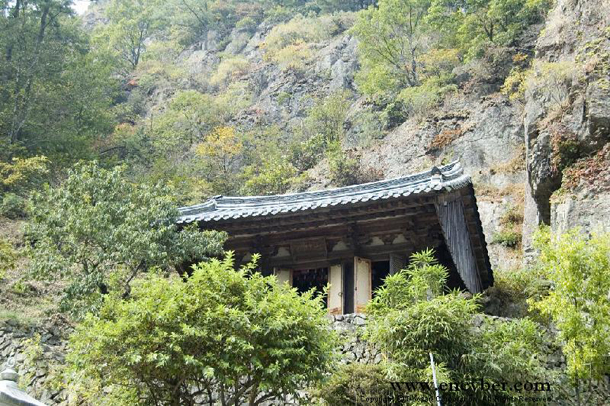- 홈
- Unique Historic Tourism
- Cultural Properties
- Anilsa Temple
Anilsa Temple

Anilsa Temple
- Location
Mountain 226, Daemyeong-dong, Namgu, Daegu
- Registration number
No. 1 (registered on September 13, 1988)
- Year of establishment
927 AD
Detailed Information
| Description |
Anilsa is a branch temple of Donghwasa Temple, the ninth head temple, which oversees a gyogu (district) of the Jogye Order of Korean Buddhism. The temple was built by Monk Yeongjo in 927 AD during the first year of the reign of King Gyeongsun, and was known as “Anilam” (“Anil” means “to be at ease”, and “am” means “temple” in Korean). The temple was named Anilam because it was a place where King Taejo of Goryeo, the founder of the Goryeo Dynasty, stayed and found peace. About 500 m above the temple is the cave where it is said King Taejo resided. Later, the temple was used as a headquarters for the resistance against Japanese colonial rule. In January of 1915, according to the lunar calendar, thirteen independent activists, including Yoon Sangtae, Seo Sangil, and Yi Siyoung, gathered together and dedicated their lives to restoring the nation’s sovereignty. At the same time, they also organized the central office for the secret organization, Society for the Restoration of Korean National Sovereignty. After the March 1st Independence Movement in 1919, the temple became a base for conducting military campaign funding activities, designed to assist the Provisional Government in Shanghai. Monk Gyeongsong renovated the building in 1932, and Monk Cheolin rebuilt it further in 1960. The temple’s current structure has remained unchanged since the 1990s Daeungjeon Hall (the main hall), Samseonggak, Beomjongru (the building where the temple bell is enshrined), Haetalmoon, and Yosachae are the buildings that remain standing today; the other temple buildings have been lost over time. In 1999, the former Daeungjeon Hall was destroyed, and construction of a new hall began. However, due to poor construction, this hall is now being reconstructed. Some of the temple’s main features include the Beomjeong, a bell in the Beomjongak that weighs 2,250 kg, and Samseonggak, a building that enshrines mountain spirits, dragon gods, and a Buddhist statue. |
|---|

- 자료 담당자 :
- 문화관광과 김창룡 664-3253
- 최근자료수정일 :
- 2019.11.29
